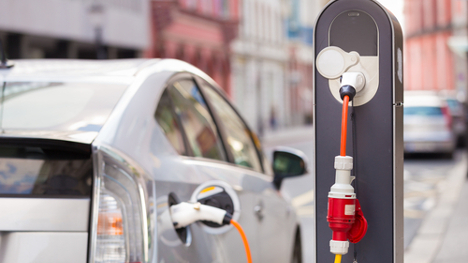What 25% EV market share would mean for remarketing

According to Manheim’s 2016 Used Car Market Report, by 2025, EVs are expected to make up 25 percent of auto sales.
By subscribing, you agree to receive communications from Auto Remarketing and our partners in accordance with our Privacy Policy. We may share your information with select partners and sponsors who may contact you about their products and services. You may unsubscribe at any time.
ATLANTA –
Gas prices are low, and shoppers in 2015 turned more and more to SUVs and trucks for their next vehicle purchases. Consequently, the electric-vehicle market hasn’t made the headway in terms of market share that many were expecting.
That said, the tides could be turning — and let’s face it, gas prices will most likely not stay low forever.
According to Manheim’s 2016 Used Car Market Report, EVs are expected to make up 25 percent of auto sales by 2025.
That is a pretty impressive number, and Cox Automotive chief economist Tom Webb, thinks dealers should take note.
“Dealers who understand trends in the electric vehicle market and create strong wholesale strategies now will be poised for success in the decades to come,” Webb said in the report. “Key factors to consider include tax incentives, geopolitical pressures and population migration.”
For example, dealers need to make sure they understand the full impact of federal and state tax incentives and their role in spurring new EV popularity forward.
Subscribe to Auto Remarketing to stay informed and stay ahead.
By subscribing, you agree to receive communications from Auto Remarketing and our partners in accordance with our Privacy Policy. We may share your information with select partners and sponsors who may contact you about their products and services. You may unsubscribe at any time.
Webb explained that The American Clean Energy and Security Act of 2009 established tax credits for electric vehicles that can total $7,500 depending on battery size.
This incentive will remain available to all plug-in EVs until each manufacturer has produced 200,000 qualifying vehicles across all models in the U.S., according to the report.
And on a state level, California, Washington and Colorado, to name a few, “have robust incentives in place that should shape remarketing strategies,” Webb said.
What’s one thing these incentives are pushing for plug-in EVs or PEVs? Well, lease penetration, of course, as many consumers see these incentives as the main factor behind their choice to pick an electric vehicle for their next purchase.
According to the report, lease penetration for PEVs is at 75 percent versus 28 percent for traditional cars.
Webb said this “has created an inventory management challenge for OEMs and their captive finance partners.”
This trend, Webb explained, will have an impact, specifically, on consignors, who may have to look outside the U.S. for ways to sell off inventory.
“With such a high number of lease returns for electric vehicles creating a glut of inventory in the market, consignors must think globally when considering ways to release inventory pressure,” Webb said. “The U.S. is not the only country that has incentivized the growth of the electric vehicle market, and there are pockets of demand placed around the world.”
Recent trends in regards to the increasing urbanization in the U.S. and beyond are having an impact, as well. Webb pointed out population migration will serve to be another “large driver” for EV adoption. According to the report, by 2025, there are predicted to be 40 regions with a population of over 10 million around the world.
“This effect of cities becoming denser will drive the adoption of cleaner vehicles as well as car sharing, both of which will benefit electric vehicle sales,” Webb said.
Webb said the global electrified vehicle market will most likely grow to 30 million new units produced in 2025. And this poses a challenge for the used industry. Where will all the EVs coming off lease be remarketed?
“A greater emphasis will be placed on adequately and strategically remarketing these units. This will require separate domestic and global strategies for PEVs,” said Webb. “Being able to quickly capitalize on changing factors in the U.S. and abroad will determine whether a consignor is successful or not with its PEV remarketing strategy.”
As for how dealers may choose to use some of these EVs coming back through the remarketing cycle in future years, Auto Remarketing recently asked Webb about the certified-pre-owned potential for EVs.
One again, since lease penetration is high, the industry, including dealers, will have to think up some unique remarketing strategies to deal with the influx of PEVs, and there might be an opportunity in certified pre-owned for these vehicles.
“Some of these units (EVs) would have pretty high lease penetration rates — technically a couple of models are 100 percent … You do have a significant amount of exposure out there, and again, it would, of course, lend itself to a CPO program because you’re giving peace-of-mind, which is the biggest selling feature of the CPO program to a model which is somewhat unique,” Webb said during the phone interview.
Granted, Webb pointed out a CPO EV could be a hard sell for dealers as there are some residual value challenges. And if shoppers buy a used EV they lose the federal tax incentive, and given energy costs, actual cost-savings on an electric aren’t all that high right now and “not necessarily a selling point,” Webb said.


